Bookshelf
By Shannon E. Brewer ’03
You probably remember the books that touched your heart or inspired your best ideas when you were at Saint Mary’s. But do you remember the volumes you conquered in just your first year? Were they classics by Hemmingway, Austen, or Tolstoy? First-year students at Saint Mary’s are reading these literature greats and more as professors seek to broaden their perspectives and communicate a variety of subjects through literature. Here, Saint Mary’s professors from several disciplines share the texts their students are reading and why.
The Book
Unaccustomed Earth
by Jhumpa Lahiri Knopf 2008
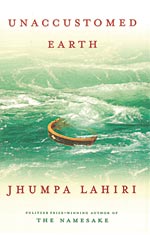 The Course
The Course
ENLT 109W: Words of Love
This course is a study of literature as the shaping of language into forms (fiction, non-fiction, drama, and poetry) that “contain” encounters (erotic, cerebral, divine): unions and breakings, mappings and explorations, loss and discord, terror and hate, anger and pity, the uses and disuses of memory and imagination.
The Professor
“The first standard I have for choosing texts for this class is that the text must be what I call a ‘complex text.’ It must require the student to read at her highest level…In addition to being able to say something about her acts of reading, her acts of memory of narrative and lyric action, the student must be able to read metaphor and analogy deeply...Each text offers words and metaphors (words of love) even as it asks some of the biggest questions with which the person who would be good must struggle.”
—Sister Eva Mary Hooker, CSC, professor of English
The Book
Women’s Diaries of the Westward Journey
by Lillian Schlissel Schocken 2004
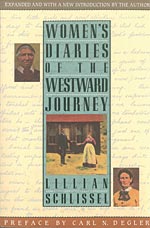 The Course
The Course
HIST 201: United States History to 1865
This history course explores the political, social, and economic history of the United States from the colonial period through the Civil War.
The Professor
“I always try to include a book of primary sources. I try to structure an assignment around primary sources so students get to experience the process that historians go through in trying to interpret history.”
—Bill Svelmoe, associate professor of history
The Book
Anna Karenina
by Leo Tolstoy
The Course
ENLT 106W: Meaning and Mayhem
Designed to develop skills in reading, this 106W course is taught in tandem with Introduction to Philosophy. The literature course is comprised of Russian stories, novels, and plays.
The Professor
“As a matter of course I use challenging texts in my first-year classes…Students more or less automatically raise the bar for themselves…The in-class essay that culminates our engagement with Anna is often the students’ strongest, most assured paper. For that we can thank Tolstoy.”
—Linn Vacca, literature professor at the Saint Mary’s home campus and in Rome since 1969
The Book
The Book of Salt
by Monique Truong Houghton Mifflin 2003
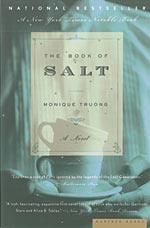 The Course
The Course
ENLT 106W: Exploring Cultural Identities
Taught in tandem with Introduction to Sociology, this course explores questions of identity through the lenses of sociology and literature as students connect with other lives real and imagined. Through this interdisciplinary approach, students will be exposed to diverse perspectives and have the opportunity to reflect and write about identities similar and different from their own.
The Professor
“All the books that I chose for my class, from Junot Díaz’s Drown to Marjane Satrapi’s Persepolis, offer diverse perspectives that go beyond cultural stereotypes. Monique Truong’s The Book of Salt focuses on the private life of Bình, a Vietnamese cook employed by Gertrude Stein and Alice B. Toklas in 1930s Paris. It’s a potent, gorgeously written novel that allows readers to recognize and understand the complexity of another person’s identity.”
—Frances Hwang, assistant professor of English
The Book
Acting One
by Robert Cohen 5th ed., Mayfield Publishing
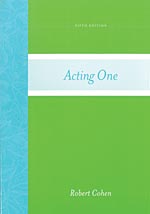 The Course
The Course
THTR 205: Introduction to Acting
Introduction to Acting is an exploration of the elements of a realistic acting technique using games, improvisations and exercises, culminating in two-character scenes later in the semester.
The Professor
“[Acting One] is by an American professor most regarded as the premier author for beginning actors, but my course is primarily practical and experiential. Even so, I still need my students to know a common vocabulary and to learn some basic acting principles and methodology.”
—Katie Sullivan, associate professor of dance and theatre
The Book
Incidents in the Life of a Slave Girl
by Harriet Jacobs
The Course
HIST 201: United States History to 1865
This history course explores the political, social, and economic history of the United States from the colonial period through the Civil War.
The Professor
“[Jacobs] hid in her (free) grandmother’s attic crawlspace for seven years, with nearly no light and no room even to sit up, watching her children come and go, so that her master would give up on finding her so she could finally escape with her children. Frederick Douglass’ narrative is more commonly assigned than Jacobs’, but Jacobs’ text is in many ways easier for our female students to connect with than Douglass’. Though it can be a draining read, the students find it deeply engaging.”
—Amanda Littauer, assistant professor of history
The Book
Bound Feet and Western Dress
by Pang-Mei Natasha Chang Anchor 1997
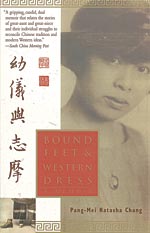 The Course
The Course
HUST 103W: Lives and Times: Book Club
This introductory course explores the interaction of individuals living today or in the past with their cultural milieu through a study of works that have cultural or historical importance.
The Professor
“This memoir is a complex interweaving of the personal stories of two women, the author herself and her great aunt, Yu-i, who was both blessed and cursed by being born into times of great change in 20th-century China. With her great aunt’s story as a counterpoint to her own, the author writes of her struggle as a child of immigrants to feel at home in American society. I love teaching the books in Lives and Times because they offer our first- and second-year students a window into other lives, times, and cultures, from a first-person, often female perspective. Through our discussions, they often have a clearer view of their own lives and times.”
—Gail Mandell, professor of humanistic studies

